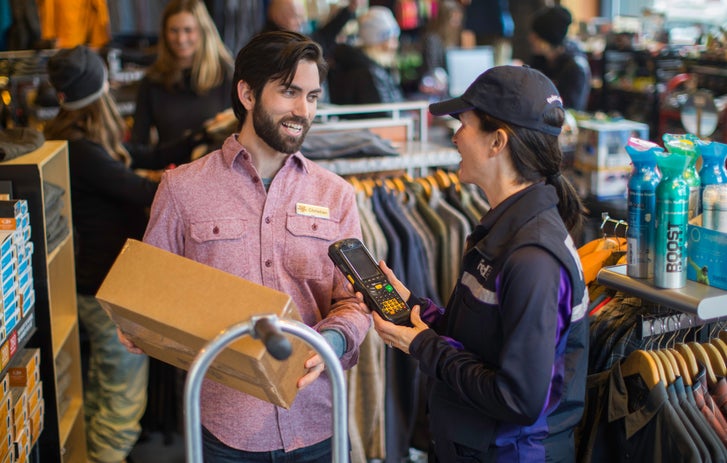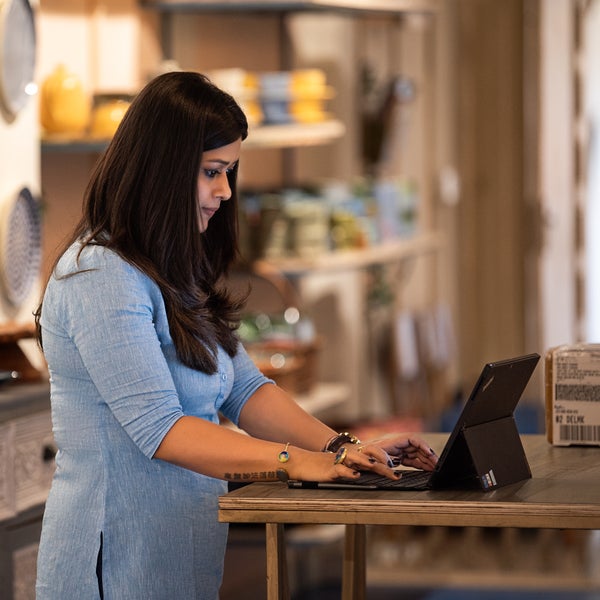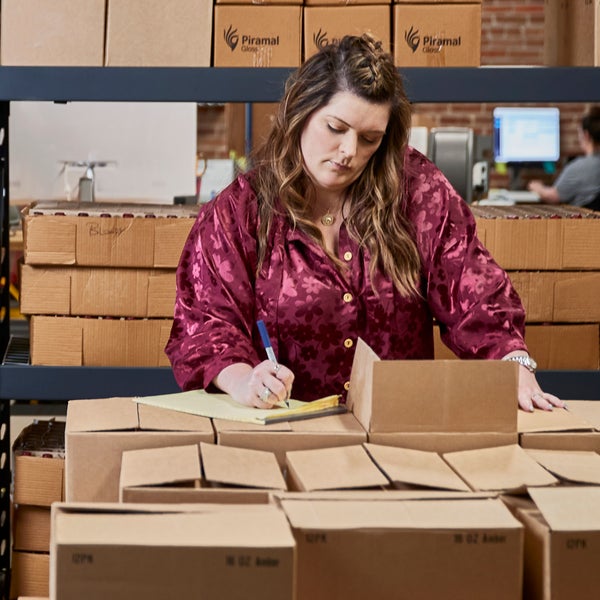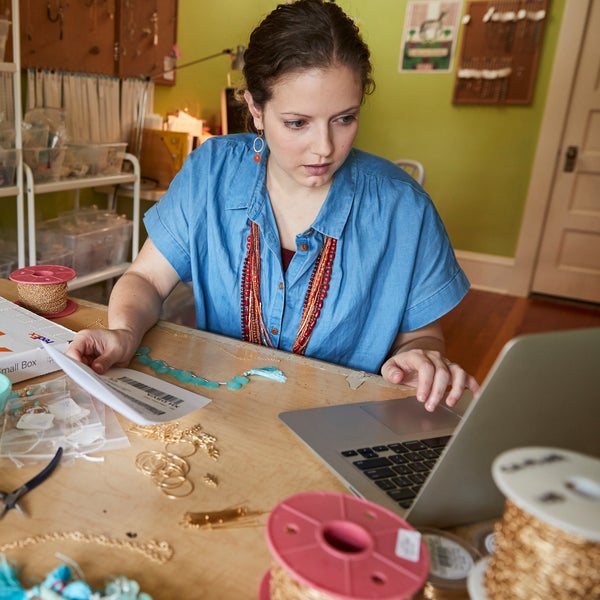The big benefits of incremental innovation
When you think of innovation, game-changers like artificial intelligence (AI) or the smartphone may come to mind. But innovation isn’t always radical. It can be a result of incremental improvements over time. Incremental innovation is about learning as you go, and incorporating new knowledge along the way.
“There is a place for both radical and incremental innovation,” said Jessica Bradford, Vice President of Business Strategy and Operations at FedEx Dataworks. “Often, you can reach radical through incremental, taking things that are working today and making them 1% better. That 1% better over time leads to breakthroughs, and you start to see how you are thinking about things completely differently.”
When you think of innovation, game-changers like artificial intelligence (AI) or the smartphone may come to mind. But innovation isn’t always radical. It can be a result of incremental improvements over time. Incremental innovation is about learning as you go, and incorporating new knowledge along the way.
“There is a place for both radical and incremental innovation,” said Jessica Bradford, Vice President of Business Strategy and Operations at FedEx Dataworks. “Often, you can reach radical through incremental, taking things that are working today and making them 1% better. That 1% better over time leads to breakthroughs, and you start to see how you are thinking about things completely differently.”
That’s the approach her team took when they developed FedEx® Sustainability Insights. The goal was to create a carbon emissions tool that empowers customers to make more informed shipping decisions—and empowers FedEx operations. As the project progressed, more and more use cases came to light. Instead of becoming overwhelmed with the opportunities and use cases, the team focused on making the data and insights 1% better each day. This included looking at emissions from FedEx drop off facilities, trucks, planes, hubs, and more.
Again, instead of aiming for 100% right away, the team took it step by step:
- They dug into the data.
- They built on that understanding by looking at globally recognized carbon emissions standards.
- They modeled calculating and attributing emissions for each touchpoint at a package level.
- They had the models audited to ensure they were compliant with applicable standards.
“If you have a perfect project plan, you’re probably going to end up in the wrong spot, because you’re not letting the natural learnings influence each next best decision,” Bradford said.
How to use incremental innovation to your advantage
How to use incremental innovation to your advantage
You don’t need to be a huge corporation with deep data to lead the way. Here’s how to get started with incremental innovation—and stay on track.
You don’t need to be a huge corporation with deep data to lead the way. Here’s how to get started
with incremental innovation—and stay on track.
Listen to your customers
Innovation is driven by customers at every level,” said FedEx Design Strategist Advisor Sarah Donovan. “The first step that led to FedEx Sustainability Insights was getting a pulse on the marketplace.”
Donovan said larger businesses mostly want to reduce emissions and get reliable data for Environmental and Social Governance (ESG) reports. But the tool also gives small and medium business owners information to help them make decisions affecting their carbon impact. And, it gives them confidence that FedEx is working to do its part, too. While these business owners might not always be able to prioritize sustainability over cost and speed, they should still have the choice.
While more formal options like focus groups and surveys are available, there are so many ways to hear your customers. Read your online reviews and industry magazines. Observe customers as they interact with your product to see their reactions, and ask them questions. Also, pay attention to social media comments—on your posts and your competitors'.
“There’s a research method called netnography,” said Donovan. “It’s basically a fancy word for going on social media and looking at comments on your own content, and your competitors’ content.”
Organize your data and put it to work
What data sources can you use to make decisions? You probably have website and social media analytics. You may have email and customer relationship management software stats. You can hire a research company to do a study or focus group for you. And remember: Customer feedback is data, too.
“It’s about creating a collective context, taking bits and pieces from different sources,” said Donovan. “You can look at your web traffic analytics, but you can also pair that with what you see in comments. And with what you see from a market research firm.”
“The information about the package is just as important as the
package itself.”
“The information about the package is just as important as the package itself.”
— Frederick W. Smith, FedEx founder, 1978
Think, test, repeat
Ideas that spark innovation don’t happen on command—so you need to pay attention when the aha moment hits.
“Even just a notepad in your phone, or a place where you and your team members can leave ideas, is really important,” said Donovan. “Because inspiration doesn’t happen when you plan it. It happens randomly.”
Having a bank of ideas is exciting, but you can’t invest time and money into developing each one. That’s where your customers can once again be invaluable. Donovan suggests choosing customers who are your biggest advocates to test ideas before launching them. You can take their input and either scrap the plan or refine it—1% at a time.
Upskill as you go
Innovation takes expertise, but you don’t need to get there overnight.
“Learn as you go, learn what you need to do, and how you need to do it as you’re progressing,” said Bradford. “It’s always that 1% incremental approach of simplifying and taking small steps forward.”
For example, instead of committing to a lengthy online course, start with microlearning—using short pieces of content. Follow subject matter experts on professional networking platforms. Talk to industry leaders at conferences or events. Keep building on your knowledge and share it with others.
Don’t be afraid to take away
You may feel compelled to keep dazzling your customers with new features. To continuously introduce new capabilities to outrun the competition. But is that what your customers need?
“A lot of times innovation is about subtraction,” said Bradford. “Wherever we can, we delete a part, process, or even a functionality that might not be adding value.”
And as you simplify, remember that 1%. Don’t take away too much too fast. Scale back, assess, and then simplify some more. And don’t be afraid to pivot.
“Always have a growth mindset and be prepared to change and shift,” said Donovan. “Keep an eye out for opportunities to improve, to move into different markets, or to offer other services.”
Move forward with incremental innovation
Radical innovation can be a daunting concept for small business owners. Incremental innovation reduces the pressure and risk of an all-or-nothing approach. Give it a try and see where it can take your business.
Move forward with incremental innovation
Radical innovation can be a daunting concept for small business owners. Incremental innovation reduces the pressure and risk of an all-or-nothing approach. Give it a try and see where it can take your business.
Move forward with incremental innovation
Radical innovation can be a daunting concept for
small business owners. Incremental innovation
reduces the pressure and risk of an all-or-nothing
approach. Give it a try and see where it can take
your business.







